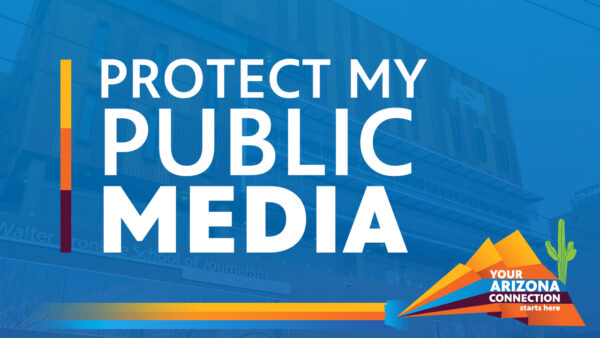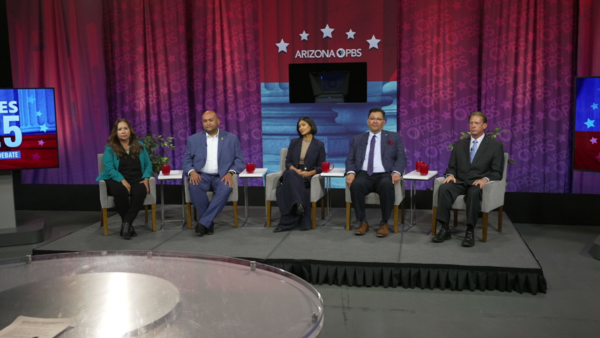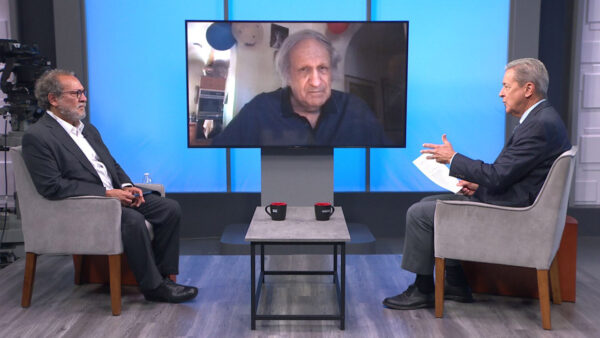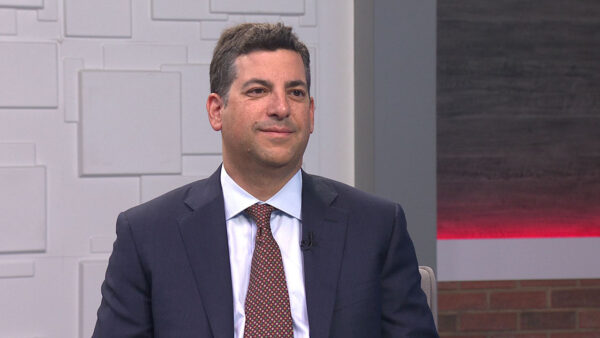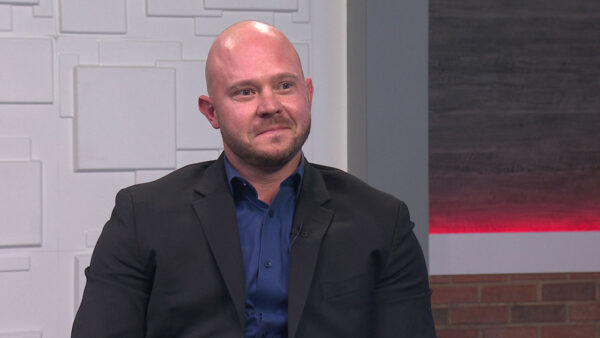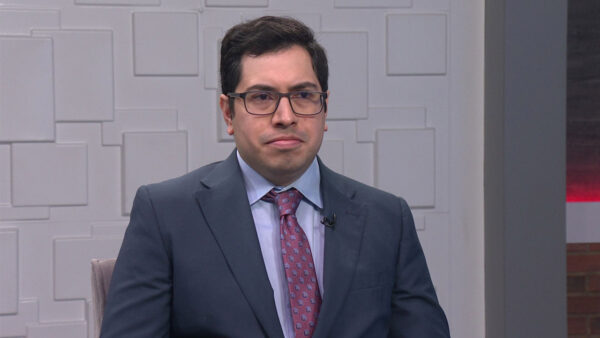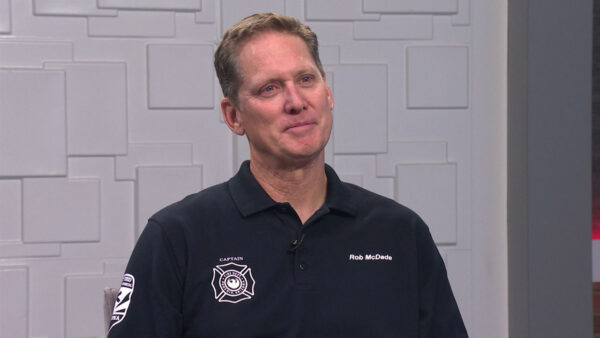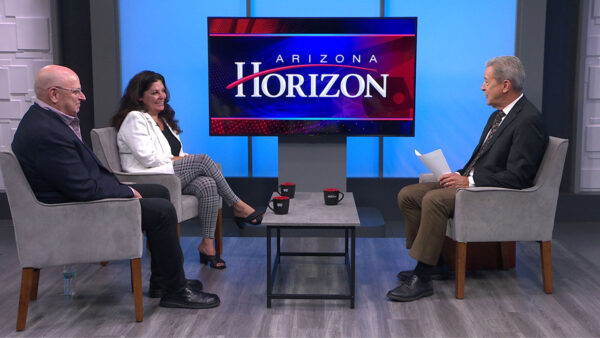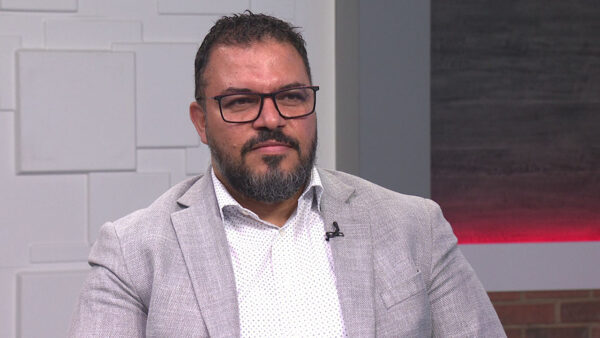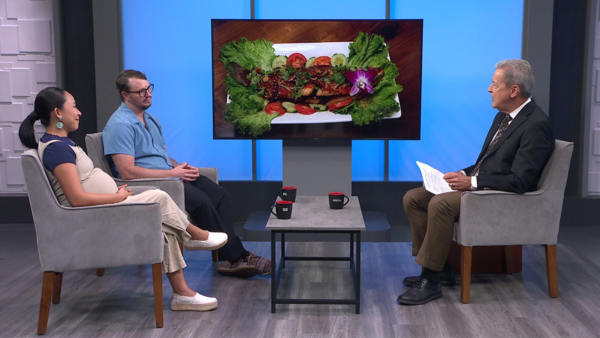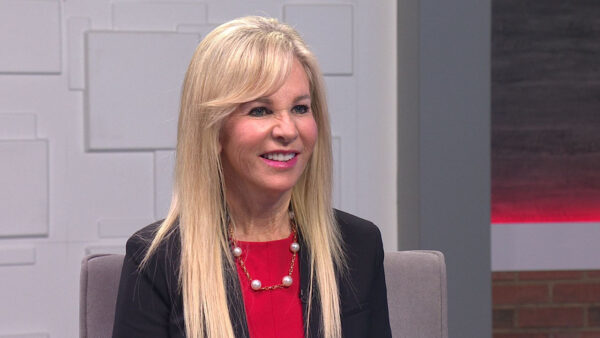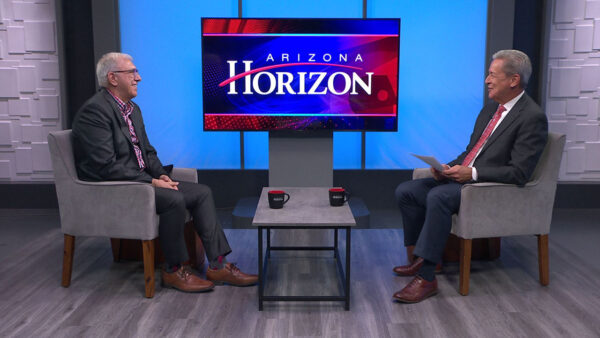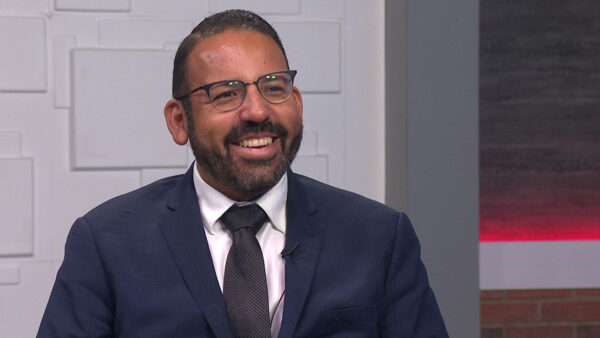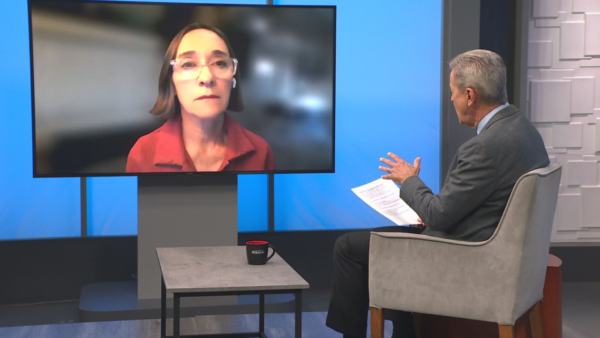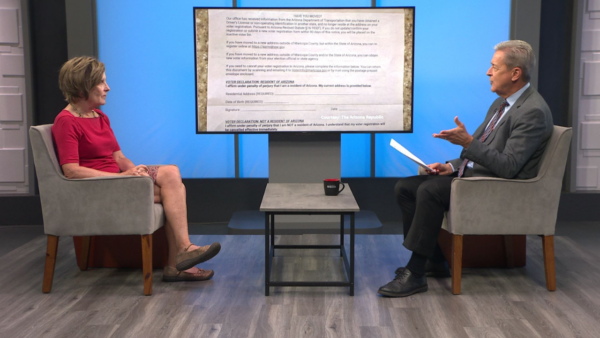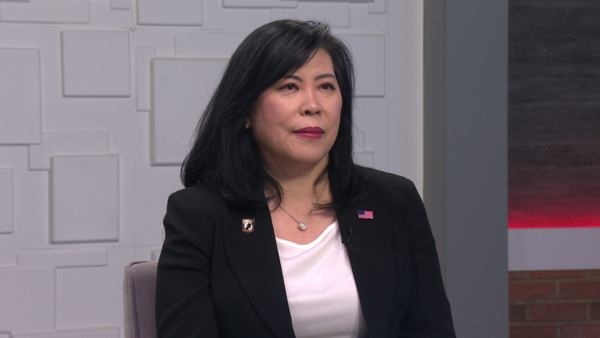Arizona’s high school graduation rate has jumped 24 percent over the past decade, the highest increase in the nation. Part of that growth can be attributed to a ten percent increase in the Latino graduation rate from 2005 to 2011. Bill Hart of ASU’s Morrison Institute and Dr. Kent Scribner, Superintendent of the Phoenix Union High School District, will discuss what led to the increase.
Ted Simons: Good evening and welcome to "Arizona Horizon." I'm Ted Simons. My school graduation rates jumped 24% in Arizona over the past decade. That's the biggest increase in the country and three times the national average. The spike in numbers seems to correspond to an increase in the graduation rates of Latinos who make up nearly half of Arizona high school students. Here to talk about Arizona's increasing high school graduation rates are Dr. Kent Scribner, superintendent of the Phoenix union high school district. Dr. Scribner is also a member of President Obama's advisory commission on educational excellence for Hispanics. Also joining us is Bill Hart of the Morrison institute. The institute recently released a report indicating that Arizona was not closing the gap in educational disparities among Latin why students. Thanks for joining us. 24% increase in the last decade. What's going on here?
Dr. Scribner: Well, I think at least in urban schools I can speak of that from my experiences, I think that there's a great shift towards focusing on college and career preparedness. I think the best way to improve graduation rate is not to focus on it but rather to focus on college and career preparedness. The goal should not be high school graduation as the goal. The goal should be are our students able to participate freshman year in credit bearing courses at our universities.
Ted Simons: 24%, three times the national average. What's happening out there?
Bill Hart: As Dr. Scribner said it has to do with refocused efforts on the school system towards these ends. It also is a little bit of a misleading statistic because you're starting from a lower base, so you have a bigger increase. I think that the Latino rise in Latino graduation rates is a bright spot in our school systems as we noted in the report that we did, however, it's the gap between Latinos and nonLatino whites has not narrowed in the past ten years, and take remains a really important concern.
Ted Simons: I want to get to that in a second. As far as numbers and these remarkable, biggest increases in the country, has the reporting changed? Has the tracking data changed?
Bill Hart: The reporting data has changed, I know it's changed in over the past ten years. Different requirements, different measurements. It's changed in other states. There's a national move on to have all states report calculate and report in the same way. They still don't, so there are differences across the country in how states measure this. The way this education week report measured it was what they call a cumulative promotional index, which is multiplication of ratios as you pass from one grade to another through high school. That's not the way the Arizona Department of Education does it. They use the cohort method. Their number is different of graduation rate than the education rate.
Ted Simons: That difference in numbers, does it equate to something we need to be concerned about or are we seeing increasing graduation rates among Latinos and thus Arizona high school students in general?
Dr. Scribner: Well, I think that we are seeing increases N. Phoenix union in 2000, we had a 55% four-year graduation rate. What we keep track of is the number of students who start at high school and in four years graduate. Those numbers went from 55% of our students graduating in four years to a four-year graduation rate of 80% in 2010. That is the case for across the different demographics but certainly for our minority student population, which is the highest number of students in our schools.
Ted Simons: You're saying it isn't so much -- we talked a little bit earlier, it's not so much stopgap all hands on deck emergency measures it's going beyond that. It's saying there's a lot of potential here there are a lot of smart kids here. Quit treating them like there's a problem. Treat them like smart kids.
Dr. Scribner: Phoenix union is extremely fortunate. Our governing board adopted a new mission of preparing every student for success, in college, career and life. They didn't say graduate every student four years from high school. As a result of that cultural transformation, as a result of our focus on attitudes and behaviors around college and career preparedness high school graduate rate has taken care of itself. Not taken care of itself but improved dramatically. We're not done until 100% of our students graduate. What I can say is latino students, African-American students, all of the different cohorts have improved over this last decade.
Ted Simons: Did the Morrison institute look at the last decade and see problems in the educational gap, the achievement gap. The idea that we're going to have some sort of economic and fiscal crisis ahead in Arizona if some of these gaps are not closed. What's going on here.
Bill Hart: We looked at the report called dropped and it's on our website, but we looked at the standard measurements of academic improvement, academic achievement, college graduation rates, aims test scores, sat scores, A.P. courses taken, scores on what's called the national -- what is it? National assessment of educational progress. In all these areas the gaps between nonHispanic whites and whites are just as bad as they were ten years ago. They have not improved. Yet both groups have improved and one of the bright spots again is the increase in Latino graduation rates and other measures. But the gaps remain. Now, why is that important? It's obviously important for the individuals and families involved, but the major reason is a demographic reason. As we know, this state is rapidly becoming increasingly Latino. There are soon going to be Latinos the majority in the work force and in the schools they are already I believe a majority in the schools. If we continue to allow under-achievement in this group we're all going to face a future where we won't be economically competitive with other states.
Ted Simons: Are you seeing those kinds of achievement gaps and are the gaps there from what you see and secondly, if that is a problem if that is a concern, how do you address it?
Dr. Scribner: The gaps do exist. Students who come from a higher socioeconomic status tend to achieve higher levels than students who are poor. Phoenix union serves a student population where 78% of our students live at or below the federal poverty line. That's 29,000 a year for a family of four. That's $1600 a month. So our students are not only minority but also coming from low income families. And what we're doing is we're not looking at that status, minority status, low socioeconomic status, minority status as a deficit. We're looking at it as an absolute possibility, an opportunity and an asset. We know 49% of all students in Arizona, 1.3 million students in K-12 schools are Latino or Hispanic. If you compress that down to K-3, the primary grade levels, 65%. Our district is 80% Latino. We know also that education and the economy are inextricably linked. This is not a Hispanic education problem or challenge. This is an Arizona education, a United States education issue.
Ted Simons: The Morrison looked at that very closely, education and the economy, the link there, symbiotic nature of the two, if you will. Talk about that and do these numbers suggest a moving target here that things could be increasing maybe better than the institute's report had suggested?
Bill Hart: I would say these numbers don't show that. Because again, we cited in the report the increase in Latino graduation rates. Given all the other metrics that are not positive, I don't think that the point of the report has changed. But as Dr. Scribner said, this is not a Latino issue for two reasons. One, the reason there's under-achievement among Latinos are poverty, some language issue, there's a lack of a tradition in the families to help their kids with education. Whatever group suffers from those deficits, whether they are Latino or white or anything else, have the same results. The second reason is again because we're becoming an increasingly Latino state. If we want to attract high skill industry, competitive industry that pays good wages, that raises everybody's quality of life, raises tax revenues, we need to have an educated work force.
Ted Simons: Dropout rate in Arizona is still 14th highest in the country. Graduation ready 72%, ranked 29th. How do you improve? What do you do?
Bill Hart: I think Dr. Scribner is better able than I to say what specifically we should do but two things we mention here as far as a framework for progress is, one, committing to the long haul. This is not going to be turned around in one year or two years or five years. Secondly, we got to pay for it.
Ted Simons: Yeah. I hear that a lot.
Dr. Scribner: But also money matters. Absolutely money matters. The states that are the high end of those statistics spend more per student. However, attitude matters as well. We need to shift the paradigm. Urban schools in L.A., New York, Chicago, Miami have always focused historically on a deficit model. How do we minimize failure. Low income minority students has problem that needs to be fixed. I reject that notion. I believe what we should not do is focus on minimizing failure but rather on maximizing success. Our success with graduation rate but also with aims scores, with our act results, our A through F labels, is a function of increased rigor. We have more honors classes, more A.P. classes, more back laureate students. We have increased from six to 10,000 students edge gauged in these rigorous pursuits. They take the act exam in the 11th grade. That's changed the conversation consult really around college and career preparedness more than anything we are have done.
Ted Simons: Good to have you here. Thanks for joining us.
Guests: Thank you.
Bill Hart:ASU Morrison Institute; Dr. Kent Scribner:Superintendent, Phoenix Union High School District;
